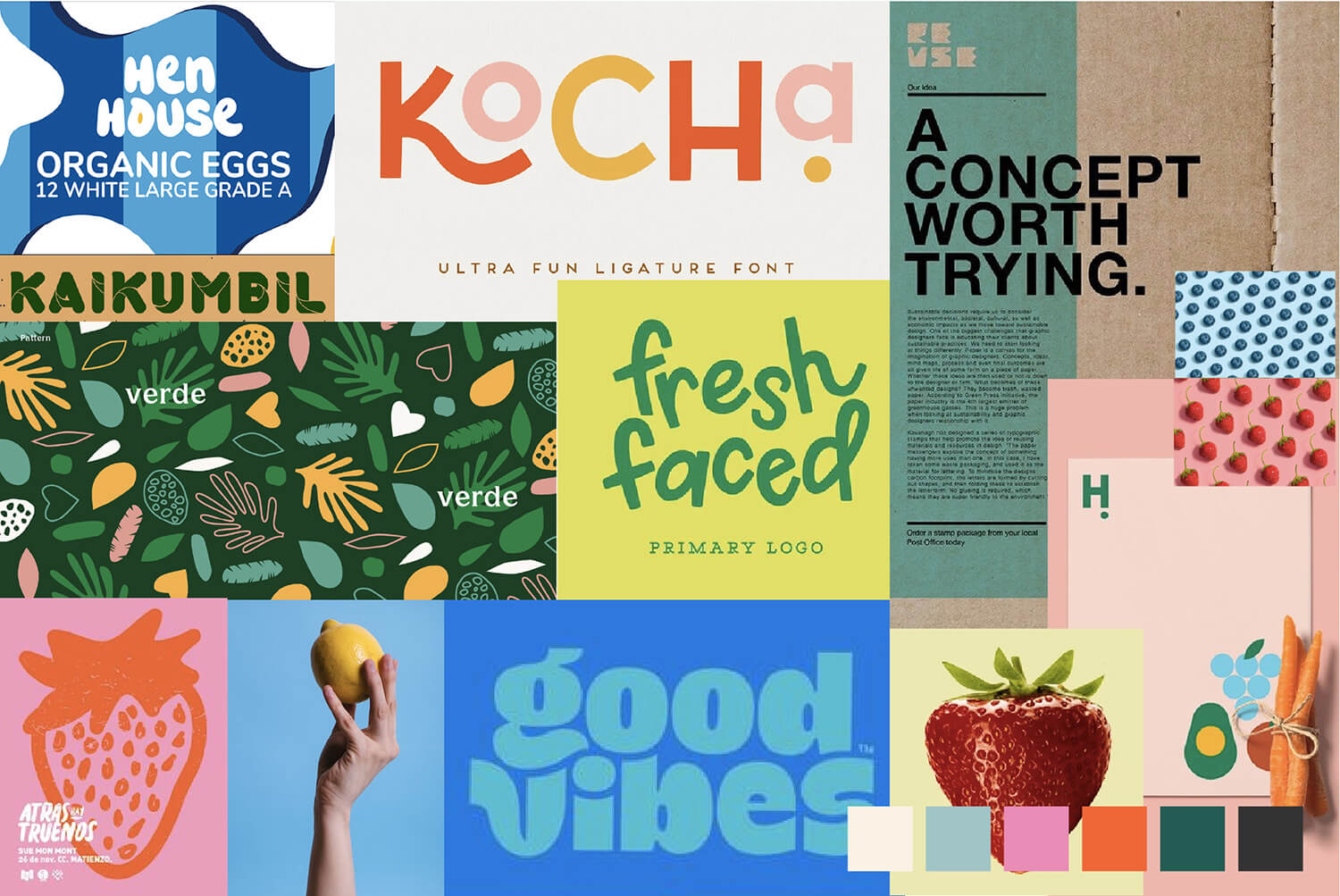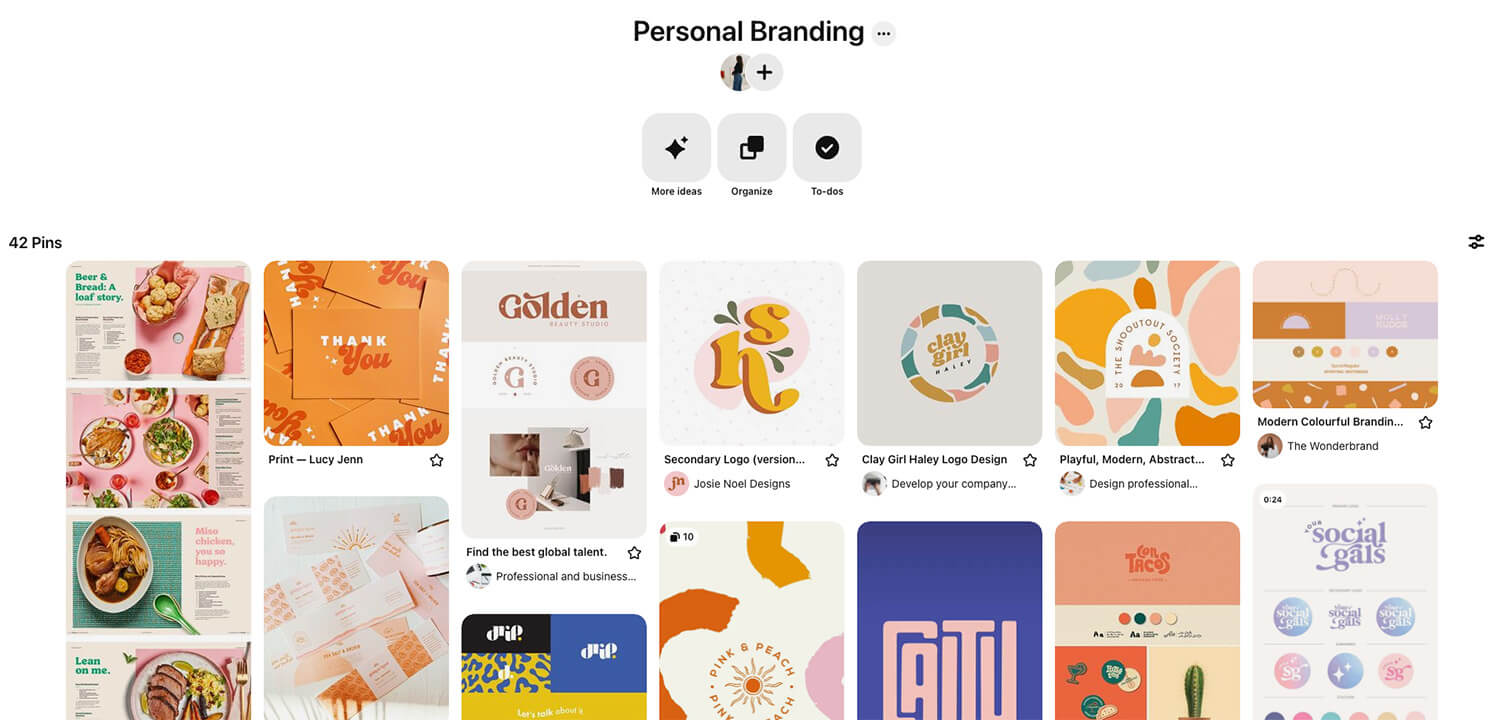Every designer has their unique creative process, but what I have found helps me visualize and create more consistent messaging within my designs is to start with a mood board. They are a great way to get your creative juices flowing and refine the direction you want to take.
What exactly is a mood board?
Also referred to as an inspiration board, a mood board is a collection of different design elements such as images, fonts, colors, textures, illustrations, layouts, etc. that represent a project’s style and creative direction usually in a collage format.

So, what are the benefits of using an inspiration board?
Control the Creative Chaos
At the beginning of any creative project, most designers start by researching and brainstorming. This process can get messy as you are compiling inspiration. I love pulling image references from sources like Pinterest, Behance, and Instagram to start creating the look and feel of a project. Using a mood board to organize your ideas into a visual format allows you to see if different elements or initial ideas work together towards the goal of the project.
Create More Cohesive Designs
By using a mood board, you can map out your creative direction for whatever campaign or collateral you’re working on. I love referencing back to my inspiration to make sure I’m implementing the same vibe across designs. Keep in mind not every aspect of your mood board must be used. It’s more about creating a foundational style and figuring out which elements evoke the emotion or the general aesthetic that you want your design to convey to the target audience.
Help Clients Understand Your Vision
Whether it is clients, your creative director, or other team members, having a mood board to visually represent your creative direction goals for the project can help sell your idea where words fall short. Sometimes as designers, we forget that not everyone understands or may be able to visualize creative terms like “modern bohemian” or “futuristic sans-serif.” Providing something tangible to see and understand that words may not convey comes in handy for presentations and initial project meetings.
By creating an inspiration board for the project, you can also make sure that the client’s vision and your design concept are aligned. Nothing is worse than putting hours into a design just for the client to say they wanted a completely different direction. You can even ask clients to provide a few reference images or words describing their intended direction to help you start your mood board.
How to Create a Mood Board
I like to first create mood boards on Pinterest or Behance to organize imagery & inspiration online before I create an Adobe Illustrator document to combine the final product. A quick hack I use to create specific inspiration boards: I continually add cool, eye-catching designs or imagery I like or think would be useful to incorporate later in a project to a general Pinterest board.

Things to Include:
- Doodles: Images or hand-drawn illustrations that are applicable to your project
- Color palettes: Brand colors, swatches & their hex codes, or images that have the same colors
- Images: Client-provided imagery, stock photos, product images, logos, etc.
- Textures: Elements that can be repeated for use in the background of designs or packaging
- Typography: A general feel for what style of fonts you want to incorporate in the project - if applicable, include potential voices/vocal styles
Once you’ve compiled your initial imagery and mood board elements, it’s time for the fun part: creating a final aesthetic. The design doesn’t need to be complex, but having an impressive mood board that draws your attention only helps your vision, especially when sharing it with other people.
Ways to Create an Inspiration Board:
- Adobe Illustrator: Compiling your images in an artboard will make copying elements such as color swatches or free-hand illustrations you create easier to translate to designs later.
- Pinterest: I love their endless abundance of images and how easy it is to create a board and add imagery to it. It’s also free to create an account!
- Behance: What’s more inspiring than seeing other designers’ work? This site is a jackpot of inspiration as artists share their work through projects that you can save to mood boards on the site. It’s also free to create an account!
- MilaNote: An excellent way to collaborate with team members on a mood board. They have a free version, with some limitations to their product offerings, but it’s a great site to create your inspiration board!
- Create a Physical Board: Are digital applications not your thing or applicable to your project? Create a physical board by pulling together magazine scraps, textile swatches, cut-out images, etc. Whatever your heart desires!
A Quick Recap
Spend less time and have a more precise creative direction by using mood boards. Not only do they serve an aesthetic purpose for the project, but they help communicate your design vision to guarantee it is aligned with your client’s goals.






